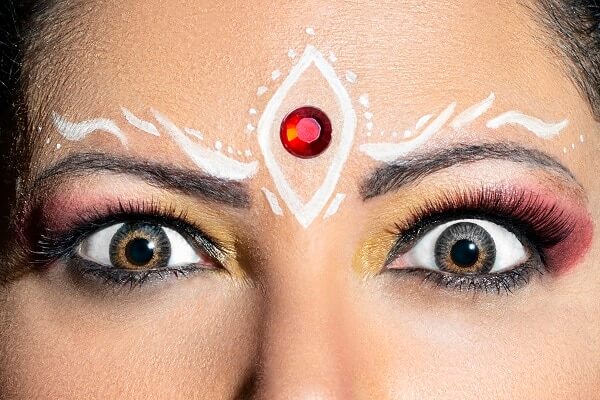Bharatanatyam-trained Dr Priya Srinivasan PhD (Creative Australia Asia Pacific Arts Awardee 2024 – Impact, and Game Changer Award Asia Society) is founder director of Sangam. Known for her award-winning book Sweating Saris: Indian Dance as Transnational Labour (2012), global events and social justice issues inspire her. Her body of works amidst fifty performances globally, include ‘Churning Waters’ with indigenous from India and Australia, and ‘The Durga Chronicles’, Winner of 2023 Green Room Award for Breaking Ground.
Tell us about your production Churning Waters, an intercultural work with Indian indigenous and First Nations Artists.
After returning to Australia following a brief stint overseas, I dreamt of red earth. I felt an unresolved responsibility as a settler migrant, the need for allyship with First Nations peoples. My research revealed pre-colonial connections in the Indian Ocean’s trade routes linking South Asia, Southeast Asia to Australia. These interactions highlighted the long, intertwined histories between our peoples and led me to Churning Waters for the Australia Festival in India, supported by DFAT and Creative Australia. We explored water stories with the eminent Priyadarsini Govind, indigenous artist of Mettumulluvadi TN, and Thilagavati Palani (who practises the Koothu folk art of storytelling with song and dance) and First Nations artists Gina Maree Bundle, Sylvia Nulpintidj and Nadine Lee of the Yuin, Larrakia and Yolgnu people of Victoria and NT. It was unique and transformative. Sylvia described her experience as “this is how it feels to be in a country where people look like you”.
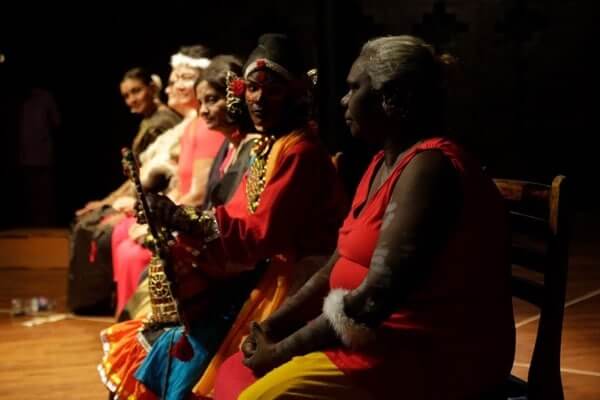
What are the crucial elements in creating multi-arts works that interweave performance traditions?
First Nations artists are still repairing from cultural fragmentation and suppression; encountering an excessive display of culture can be overwhelming. Churning Waters taught me to bridge gaps inclusively.
I am deeply interested in historical evolution of dance. While Bharatanatyam helped me combat self-loathing in a racist white Australia, I also grapple with its marginalisation of hereditary artists, and the privilege of my caste in accessing stages they were denied.
My focus is on creating pathways that honour traditions and inclusivity. It is not just about stepping through the privileged doors of Eurocentric funded spaces, but to keep them open, the reason why Sangam was formed.
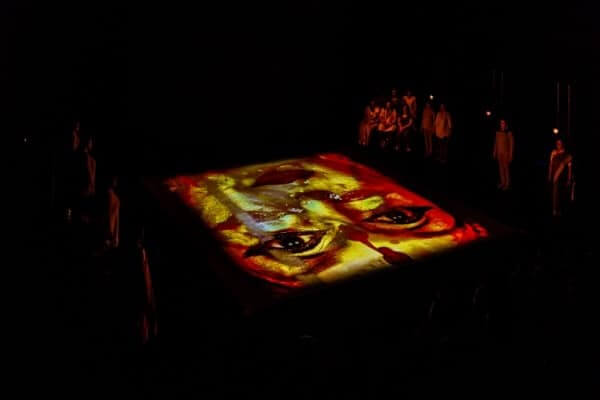
Priya Srinivasan of Sangam
You’re known for using multimedia visuals in your performance art…
I don’t see a dichotomy – visual media complements and frames performances today. I have always connected visual design, media, music, rhythm and the dancing body using dramaturgical methods, allowing audiences to create their own meanings.
This is not a new phenomenon. Dancing in productions of Guru Chandrabhanu and Geoffrey Goldie at the Arts Centre in Melbourne, Geoffrey’s painted floors framed our dancing bodies. At that time, visual media was not as prevalent. But design elements such as sculptures, drawings, paintings and spatial ambience have been integral part parts of a cohesive narrative.
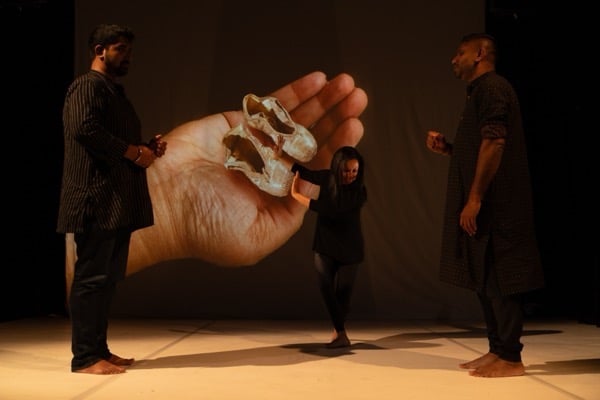
Unforgettable experiences that influenced your own creative ideology?
Performing as Madhavi in Silapathikaram under Guru Chandrabanu at Arts Centre Melbourne was when I realised it’s dance and not medicine for me.
Another profound moment was when we performed at a monastery near Brahmaputra, Assam. Women aren’t allowed inside monasteries, nor could the monks come out. Using Vaishnavite theology and the story of Narasimha, we performed on the monastery’s footsteps. The monks and we were moved to tears.
In Holland, together with Carnatic singer Uthra Vijay, we reimagined the Hermitage Museum for three hours, displacing Rembrandt’s painting Night Watch. Our reinterpretation, featuring Surinamese (Indian, African and Chinese heritage) bodies and narratives, transformed the gallery’s dominant imagery of white men into a reclamation of Southeast Asian histories and ancestral narratives.
What are you working on these days?
I’m co-directing Bunyi Bunyi Bumi, co-commissioned by BLAKDANCE and Asia TOPA with Waangenga Blanco, Alfira O’Sullivan and Murtala. This transdisciplinary performance explores the consequences of not listening to Mother Earth. It premieres in February 2025.
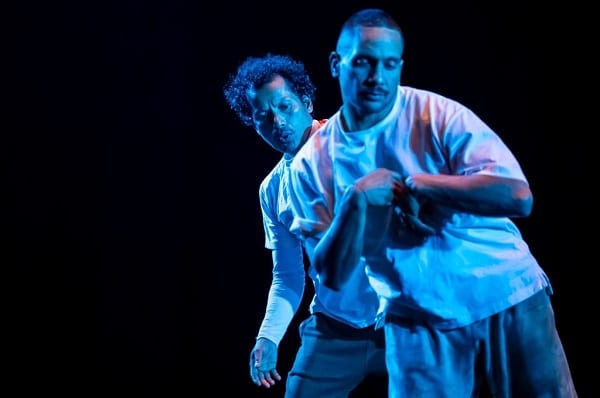
Another project, Copy of the Copy, examines the intersections of contemporary, ballet, and Indian dance through comic, culinary, and visual elements, based on years of research.
A moonlit night or a rising sun – what inspires you to be creative?
I need my inner condition to be at peace. Of course, it’s always enhanced if I’m at the Jaipur Palace or in the Australian landscape – oh yes, on a moonlit night!
Your vision for Sangam, as its founder?
Sangam began as a festival and moved into project-based work and advocacy platforms, striving to build diasporic representation on funded platforms and stages of excellence. We’ve been travelling between Australia, India and other countries for the last five years. We continue to build Sangam Labs, bringing together research and practise with longevity in mind. Priya Srinivasan of Sangam
Read more: Sandy Evans OAM: Seven Notes of the Noted



